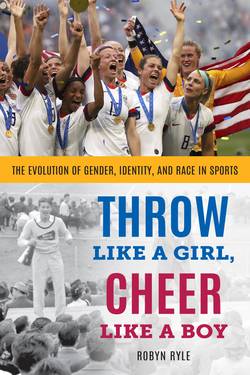Читать книгу Throw Like a Girl, Cheer Like a Boy - Robyn Ryle - Страница 21
На сайте Литреса книга снята с продажи.
The Trouble with Chromosomes
ОглавлениеThe problem of figuring out who is a woman and who is a man isn’t unique to international sporting organizations. In American society, we mostly take it for granted that there are two types of people—female and male—and that these are real, objective, and discrete categories. This means there are criteria that anyone can use to sort people into one or the other of those categories, but not both at the same time. Prevailing norms tell us that a person can’t be both a woman and a man. If gender really worked this way, determining who is and isn’t a woman for the purpose of competition would not be a problem.
But the reality is much more complicated than that. Take the criteria of chromosomes, which both the IAAF and the IOC have used for gender testing. This type of test operates on the assumption that in men, the last pairing of their 23 chromosomes (what we call sex chromosomes) is XY, while in a woman, that pairing is XX. Initially, the chromosomal test focused on the presence or absence of a second X chromosome, also known as a Barr body. So those with XX chromosomes were considered female, while those with only one X were not.[13]
The problem is that not everyone lines up neatly into XX or XY. Some people are born with more than 46 chromosomes. Individuals with Klinefelter syndrome carry an additional X, so their chromosomes are XXY. Others have fewer than 46 chromosomes, like those with Turner syndrome, who would be XO.[14] Under the initial chromosomal test, female athletes with Turner syndrome would be ineligible to compete as women, since they have no Barr body. Additionally, experts like Dr. de la Chapelle point out that abnormalities in the X chromosome may result in tests that are difficult to interpret.[15] In other words, sometimes it’s hard to determine exactly whether something is or isn’t an X chromosome. In 1992, the IOC switched away from the Barr body test to criteria that instead focused on the presence of a Y chromosome. Now, a woman would be defined not as someone with a second X chromosome but as someone without a Y chromosome.[16] Under these different criteria, those with Turner syndrome would now be considered women, but those with Klinefelter syndrome would no longer pass.
The shifting nature of these criteria are problematic, but as many experts repeatedly point out, they’re also troubling because there is no clear link between chromosomal sex and athletic performance. If the point of gender testing is truly to prevent men from gaining a competitive advantage by passing as women, a chromosomal test of sex provides the least relevant information. For example, Martínez-Patiño failed the chromosomal test because she had androgen insensitivity syndrome (AIS). This condition affects an estimated one in five hundred athletes and one in twenty thousand in the general population. With AIS, a person’s cells cannot respond to testosterone, the “male hormone.” Genetically, these women seem to be male (with XY sex chromosomes as well as undescended testes), but they don’t develop the strength or musculature associated with testosterone because their bodies cannot process the hormone.[17] Having AIS confers no competitive advantage whatsoever, but was still the basis for barring Martínez-Patiño from participating as a woman.
